Fleurs du Mal Magazine



De trip
we speelden een rol
we kregen opdrachten
ik was niemand
langer dan ik dacht
niemand verdwaalde
in die vreemde nacht
niemand was op de vlucht
niemand die het serieus nam
kwam de volgende dag
een ander mens terug
Bennie Spekken
fleursdumal.nl magazine
More in: Archive S-T, Spekken, Bennie
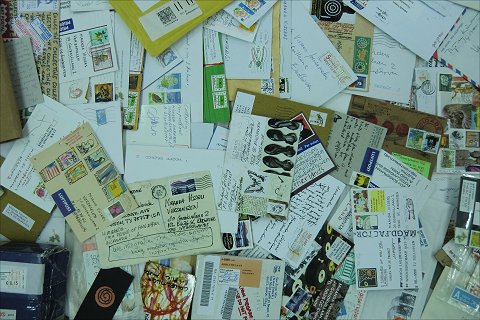
Overzicht van een deel van de inzendingen voor het Mail Art project.
Foto: Miranda Vissers
tentoonstelling vanabbemuseum eindhoven
Verzamelen – Mail Art Project
Bibliotheektentoonstelling
t/m 29/07/2011
Duizenden mensen hebben bijzondere verzamelingen, variërend van postzegels, munten, sigarenbandjes tot mooie woorden en bijzondere herinneringen. Waarom verzamelen we? Hoe verzamelen we? Veel hedendaagse kunstenaars leggen verzamelingen aan als uitdrukking van hun ideeën. Zij hebben het vermogen om de principes van ‘het verzamelen’ in een postkaart samen te brengen. De tentoonstelling Play van Abbe deel 3 ging over verzamelen en leidde tot inspiratie voor een bibliotheektentoonstelling met dit thema.
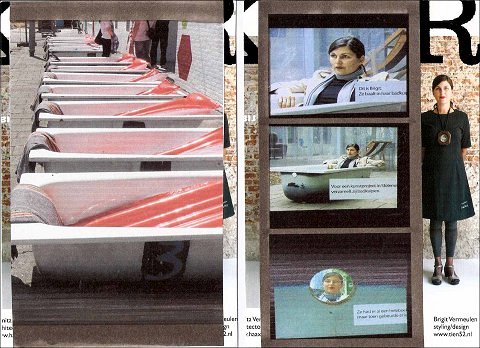
In Mail Art project is door Miranda Vissers aan geïnteresseerde kunstenaars gevraagd via een briefkaart een bijdrage te leveren aansluitend bij het thema verzamelen. Dit resulteerde in meer dan 250 opgestuurde briefkaarten: tekeningen, grafiek, schilderwerk, collages, fotografie en werken van textiel. Alle binnengekomen Mail Art wordt getoond in de vitrines van de bibliotheek van het Van Abbemuseum en op de weblog van de bibliotheek. Tevens wordt een selectie getoond van de Mail Art archieven van het museum en de organisatoren. In de catalogus is van elke kunstenaar een werk opgenomen. Hiermee ontstaat een beeld van een boeiende verzameling en een dwarsdoorsnede van de mogelijkheden van Mail Art.
Om de inzendingen te bekijken, ga naar de weblog van de bibliotheek: libraryblog.vanabbe.nl
Mail Art
Sinds de Fluxus beweging in de jaren ‘60 bewandelen veel kunstenaars alternatieve wegen om hun werk te verspreiden. Ze organiseren hun eigen Mail Art projecten en tentoonstellingen en geven hun eigen publicaties uit.
In ons internettijdperk met de groeiende betekenis van sociale media is Mail Art nog steeds een actief gegeven waaraan veel kunstenaars meedoen. In Mail Art is de code ”wat je verstuurt wordt eigendom van de ontvanger”. De ontvanger van Mail Art voelt wel de verplichting iets terug te sturen. De producten worden niet verkocht aan particulieren. Er worden archieven aangelegd en opgebouwd, zowel bij de Mail Art kunstenaar als bij culturele centra en musea. Ook het Van Abbemuseum heeft een archief met daarin een omvangrijke collectie Mail Art werken en kunstenaarsboeken.
Conservatoren: Diana Franssen, Miranda Vissers
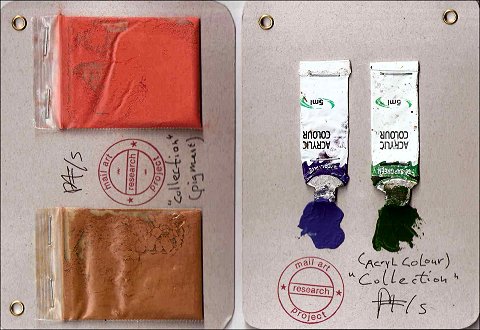
fleursdumal.nl magazine
More in: Exhibition Archive, FDM Art Gallery, FLUXUS LEGACY
.jpg)
Alfred de Musset
(1810-1857)
Lucie
Élégie
Mes chers amis, quand je mourrai,
Plantez un saule au cimetière.
J’aime son feuillage éploré ;
La pâleur m’en est douce et chère,
Et son ombre sera légère
À la terre où je dormirai.
Un soir, nous étions seuls, j’étais assis près d’elle ;
Elle penchait la tête, et sur son clavecin
Laissait, tout en rêvant, flotter sa blanche main.
Ce n’était qu’un murmure : on eût dit les coups d’aile
D’un zéphyr éloigné glissant sur des roseaux,
Et craignant en passant d’éveiller les oiseaux.
Les tièdes voluptés des nuits mélancoliques
Sortaient autour de nous du calice des fleurs.
Les marronniers du parc et les chênes antiques
Se berçaient doucement sous leurs rameaux en pleurs.
Nous écoutions la nuit ; la croisée entr’ouverte
Laissait venir à nous les parfums du printemps ;
Les vents étaient muets, la plaine était déserte ;
Nous étions seuls, pensifs, et nous avions quinze ans.
Je regardais Lucie. – Elle était pâle et blonde.
Jamais deux yeux plus doux n’ont du ciel le plus pur
Sondé la profondeur et réfléchi l’azur.
Sa beauté m’enivrait ; je n’aimais qu’elle au monde.
Mais je croyais l’aimer comme on aime une soeur,
Tant ce qui venait d’elle était plein de pudeur !
Nous nous tûmes longtemps ; ma main touchait la sienne.
Je regardais rêver son front triste et charmant,
Et je sentais dans l’âme, à chaque mouvement,
Combien peuvent sur nous, pour guérir toute peine,
Ces deux signes jumeaux de paix et de bonheur,
Jeunesse de visage et jeunesse de coeur.
La lune, se levant dans un ciel sans nuage,
D’un long réseau d’argent tout à coup l’inonda.
Elle vit dans mes yeux resplendir son image ;
Son sourire semblait d’un ange : elle chanta.
. . . . . . . . . . . . . . . . . . . . . . . .
Fille de la douleur, harmonie ! harmonie !
Langue que pour l’amour inventa le génie !
Qui nous vins d’Italie, et qui lui vins des cieux !
Douce langue du coeur, la seule où la pensée,
Cette vierge craintive et d’une ombre offensée,
Passe en gardant son voile et sans craindre les yeux !
Qui sait ce qu’un enfant peut entendre et peut dire
Dans tes soupirs divins, nés de l’air qu’il respire,
Tristes comme son coeur et doux comme sa voix ?
On surprend un regard, une larme qui coule ;
Le reste est un mystère ignoré de la foule,
Comme celui des flots, de la nuit et des bois !
– Nous étions seuls, pensifs ; je regardais Lucie.
L’écho de sa romance en nous semblait frémir.
Elle appuya sur moi sa tête appesantie.
Sentais-tu dans ton coeur Desdemona gémir,
Pauvre enfant ? Tu pleurais ; sur ta bouche adorée
Tu laissas tristement mes lèvres se poser,
Et ce fut ta douleur qui reçut mon baiser.
Telle je t’embrassai, froide et décolorée,
Telle, deux mois après, tu fus mise au tombeau ;
Telle, ô ma chaste fleur ! tu t’es évanouie.
Ta mort fut un sourire aussi doux que ta vie,
Et tu fus rapportée à Dieu dans ton berceau.
Doux mystère du toit que l’innocence habite,
Chansons, rêves d’amour, rires, propos d’enfant,
Et toi, charme inconnu dont rien ne se défend,
Qui fis hésiter Faust au seuil de Marguerite,
Candeur des premiers jours, qu’êtes-vous devenus ?
Paix profonde à ton âme, enfant ! à ta mémoire !
Adieu ! ta blanche main sur le clavier d’ivoire,
Durant les nuits d’été, ne voltigera plus…
Mes chers amis, quand je mourrai,
Plantez un saule au cimetière.
J’aime son feuillage éploré ;
La pâleur m’en est douce et chère,
Et son ombre sera légère
À la terre où je dormirai.
.jpg)
Alfred de Musset poetry
kempis.nl poetry magazine
More in: Musset, Alfred de
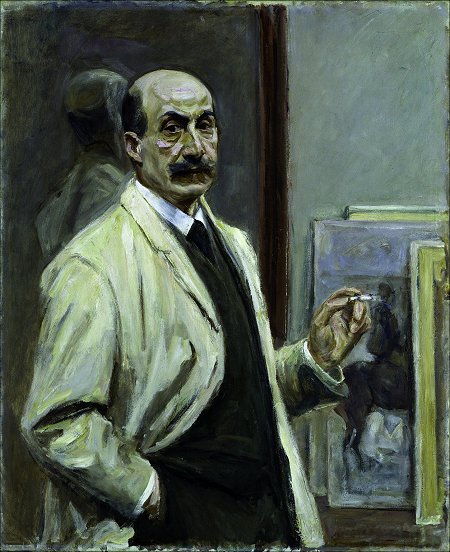
Max Liebermann (1847–1935), Selbstbildnis, 1910, Öl auf Leinwand, 1910, Hamburg, Hamburger Kunsthalle, © bpk | Hamburger Kunsthalle | Elke Walford
BUNDESKUNSTHALLE BONN
Max Liebermann
Wegbereiter der Moderne
bis 11. September 2011
Max Liebermann (1847–1935) gilt als einer der prominentesten Wegbereiter der Moderne. Sein sechs Jahrzehnte umfassendes Lebenswerk als Maler und Kulturpolitiker prägte die Kunstdebatten seit der Gründung des Deutschen Kaiserreichs 1871 bis in die letzten Jahre der Weimarer Republik. Im fruchtbaren Dialog mit den holländischen Altmeistern Rembrandt und Frans Hals einerseits sowie den französischen Impressionisten andererseits schuf Liebermann ein stilistisch und thematisch vielfältiges Werk.
Der chronologisch gegliederte Ausstellungsrundgang veranschaulicht mit über 100 Gemälden und Zeichnungen alle Schaffensphasen des Künstlers. Mit jedem Jahrzehnt seines langen Lebens gelang es Max Liebermann geradezu programmatisch seinen Stil und sein Motivrepertoire zu erneuern.
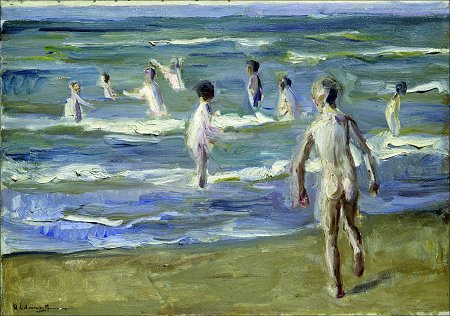
Max Liebermann (1847–1935)- Badende Jungen, 1909 – Öl auf Leinwand, 51 x 73 cm – Kunstmuseum Solothurn, Josef Müller-Stiftung – Foto: SIK-ISEA, Zürich
Der thematisch weit gespannte Bogen beleuchtet exemplarisch die wichtigsten Werkgruppen Max Liebermanns: Seine frühen Darstellungen der bäuerlichen Lebens- und Arbeitswelt zeichnen sich noch durch ein gedämpftes Kolorit aus. Erst ab der Mitte der 1880er Jahre tauchte der Künstler seine Motive des bürgerlichen Freizeitvergnügens – die Welt der Gartenlokale, des Strandlebens oder Polospiels – in das sonnendurchwirkte Tageslicht der Impressionisten, ohne jedoch deren Technik zu übernehmen.
Nach 1900 entwickelte sich Liebermann zu einem begehrten Porträtisten. Die immer wiederkehrenden Selbstporträts des Künstlers verliehen der Ausstellung eine sehr persönliche Note. Der Rundgang endet mit dem fulminanten Alterswerk Max Liebermanns, das er seit 1910 in seinem Sommerhaus am Wannsee schuf. Die unzähligen Gartenansichten entwickelten sich zu einem Experimentierfeld freier Malerei, in der Kunst und Natur zu einer glücklichen Synthese zusammenfinden.
Auf dem Dach der Bundeskunsthalle werden die drei Hauptelemente dieses Künstlergartens – die Heckengärten, die Birkenallee und die Staudenbeete – in freier Anordnung zitiert. Raffinierte Blickachsen, freies Spiel aus Licht und Farbe und das unmittelbare Naturerlebnis stellen nicht nur eine Erweiterung des Ausstellungsrundgangs dar – sie ermöglichen es dem Besucher, in die Welt Max Liebermanns mit allen Sinnen einzutauchen.

Max Liebermann (1847–1935)- Wiese mit ausgebreiteten Netzen und Segeln – Studie für die Netzflickerinnen, 1884 – Öl auf Papier auf Karton, 25 x 34 cm – Schenkung Sophie Walzer, Oxford, durch die British Friends of the Art Museum of Israel zum Gedächtnis ihres Vaters Bruno Cassirer – B55.12.0951 – Foto © The Israel Museum, Jerusalem, by Avshalom Avital
BUNDESKUNSTHALLE BONN
Max Liebermann. Wegbereiter der Moderne
bis 11. September 2011
fleursdumal.nl magazine
More in: Exhibition Archive, Galerie Deutschland
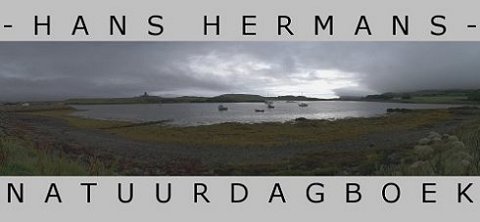
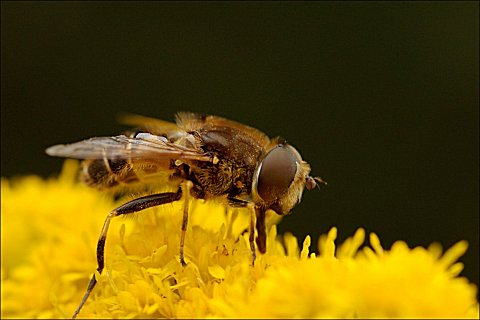

May-Flower
Pink, small, and punctual,
Aromatic, low,
Covert in April,
Candid in May,
Dear to the moss,
Known by the knoll,
Next to the robin
In every human soul.
Bold little beauty,
Bedecked with thee,
Nature forswears
Antiquity.
Emily Dickinson
(1830-1886)
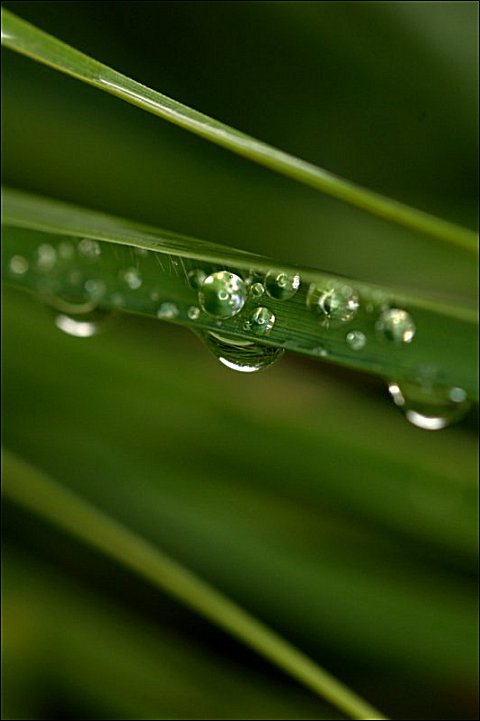
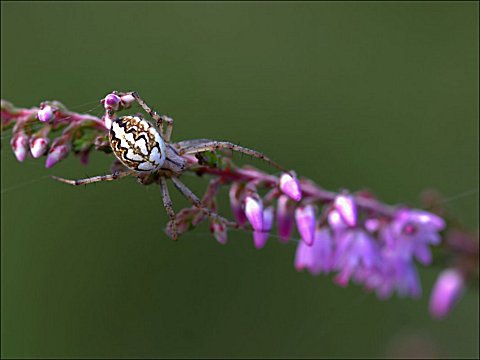
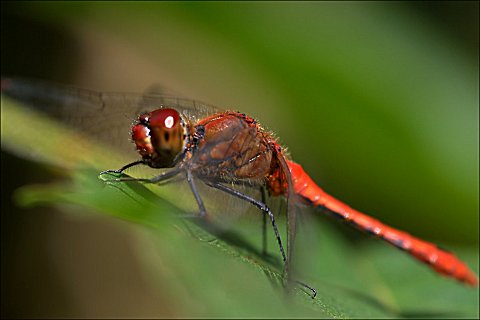
Hans Hermans Natuurdagboek
Poem: Emily Dickinson
Photos: Hans Hermans
June 2011
kempis.nl poetry magazine
More in: Archive C-D, Dickinson, Emily, Hans Hermans Photos
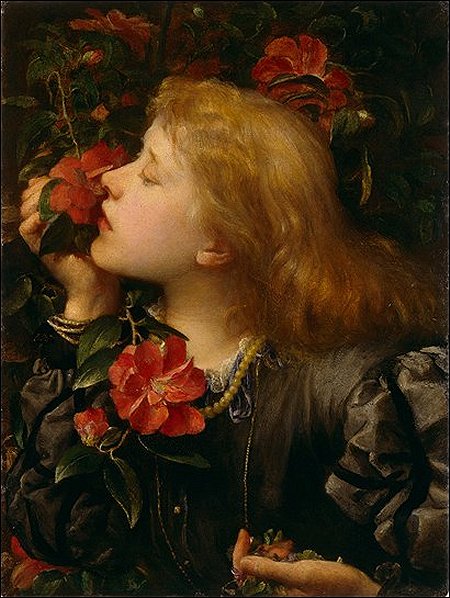
Choosing’- George Frederic Watts – London 1864 – Oil on strawboard – National Portrait Gallery, London – This painting depicts the young actress Ellen Terry reaching out to the opulent but scentless camellia and discarding the common, but fragrant violets in her hand
Victoria & Albert Museum London
until 17 July 2011 last chance to see
THE CULT OF BEAUTY
THE AESTHETIC MOVEMENT 1860-1900
The exhibition has been arranged in four main chronological sections, charting the development of the Aesthetic Movement in art and design through the decades from the 1860s to the 1890s. As well as paintings, prints and drawings, the show will include examples of all the ‘artistic’ decorative arts, together with drawings, designs and photographs, as well as portraits, fashionable dress and jewellery of the era. Literary life will be represented by some of the most beautiful books of the day, whilst a number of set-pieces will reveal the visual world of the Aesthetes, evoking the kind of rooms and ensembles of exquisite objects through which they expressed their sensibilities.
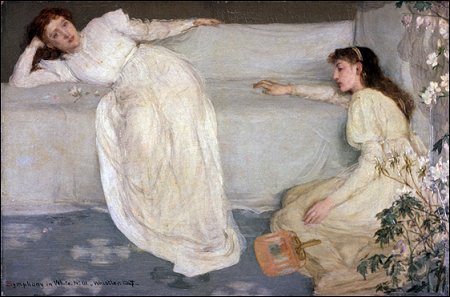
‘Symphony in White, No. 3′- James McNeill Whistler – London 1867 – Oil on canvas – The Trustees of the Barber Institute of Fine Arts, University of Birmingham – One critic claimed that this painting was ‘not precisely a symphony in white’ because it also included other colours. Whistler retorted that ‘a symphony in F…contains no other note, but a continued repetition of F, F, F-Fool!’
The search for new beauty
1860s
In the 1860s the new and exciting ‘Cult of Beauty’ united, for a while at least, romantic bohemians such as Dante Gabriel Rossetti (and his younger Pre-Raphaelite followers William Morris and Edward Burne-Jones), maverick figures such as James McNeill Whistler, then fresh from Paris and full of ‘dangerous’ French ideas about modern painting, and the ‘Olympians’ – the painters of grand classical subjects who belonged to the circle of Frederic Leighton and G.F.Watts. Choosing unconventional models, such as Rossetti’s muse Lizzie Siddal or Leighton’s sultry favourite ‘La Nanna’, these painters created entirely new types of female beauty.
Rossetti and his friends were also the first to attempt to realise their imaginative world in the creation of ‘artistic’ furniture and the decoration of rooms. In this period, artists’ houses and their extravagant lifestyles became the object of public fascination and sparked a revolution in the architecture and interior decoration of houses that led to a widespread recognition of the need for beauty in everyday life.
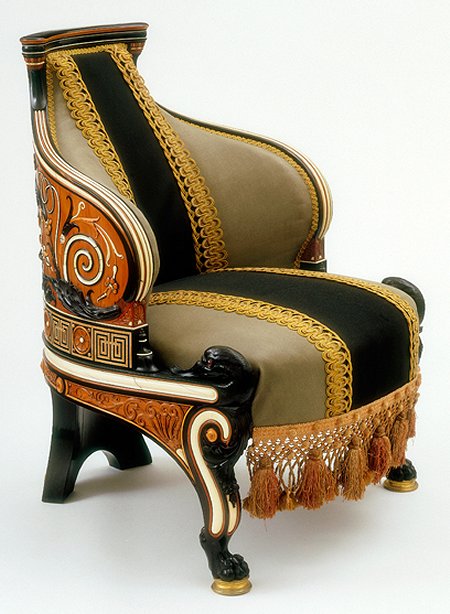
Armchair – Lawrence Alma-Tadema – Made by Johnstone, Norman & Co. London 1884-6 – Mahogany, with cedar and ebony veneer, inlay of several woods, ivory and abalone shell – Museum no. W.25:1-1980 – This armchair was designed for a ‘Greek parlour’ and belonged to Henry Gourdon Marquand, the second director of the Metropolitan Museum of Art in New York
Art for Arts Sake
1870s-1880s
One of the most important examples of the mutual influence between artists and designers is to be found in the startling collaborations between James McNeill Whistler and the architect E.W.Godwin who designed the painter’s studio, The White House, and created some of the most innovative furniture of the day. Characterised equally by elegance and eccentricity, Whistler and Godwin’s work drew upon influences as diverse as ancient Greek art and the Japanese prints and other artifacts just beginning to arrive in Europe.
In the 1870s, the leading Aesthetic artists, Whistler, Leighton, Watts, Albert Moore and Burne-Jones evolved a new kind of self-consciously exquisite painting in which mood, colour harmony and beauty of form were all, and subject played little or no part. The opening of the Grosvenor Gallery (with its famous ‘greenery-yallery’ walls) in 1877 at last gave the Aesthetic painters a fashionable and glamorous showcase for their much-discussed art. But the decade closed with intense controversy exemplified by the critic John Ruskin’s savage attack on Whistler, which prompted the painter’s spirited defence of the ideals of ‘Art for Art’s Sake’ in his writings and by the staging of his own exhibitions.
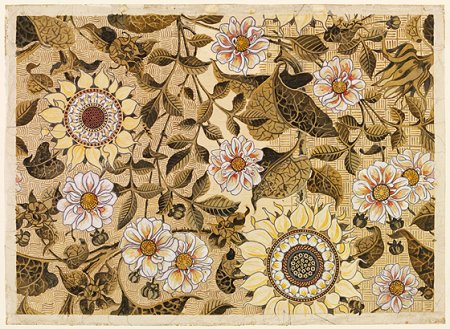
Design for ‘The Sunflower’ wallpaper – Bruce James Talbert – Made by Jeffrey & Co. London 1878 – Watercolour and body colour – Museum no. E.37-1945 Given by Mrs Margaret Warner – The wallpaper manufacturer Jeffrey & Co. employed Aesthetic designers such as Bruce Talbert to bring ‘art’ to their products
Beautiful people and Aesthetic houses
1870s-1880s
The immense success of the Grosvenor Gallery signalled the emergence of a new artistic elite whose social prestige offered an unprecedented challenge to the Royal Academy. Aesthetic painting became the fashionable enthusiasm of a circle that was grand, wealthy and intellectual. As well as buying paintings these new patrons were keen to embrace Aesthetic ideals, commissioning portraits and even adopting the styles of ‘artistic’ dress.
The rise of Aestheticism in painting was paralleled in the decorative arts by a new and increasingly widespread interest in the decoration of houses. Many of the key avant-garde architects and designers interested themselves not only in working for wealthy clients but also in the reform of design for the middle-class home. The notion of ‘The House Beautiful’ became a touchstone of cultured life.
Attracted by the growing popularity of Aesthetic taste, many of the leading firms making furniture, ceramics, domestic metalwork and textiles courted artists such as Walter Crane and a growing band of professional designers, most notably Christopher Dresser. Co-inciding with a period of unprecedented expansion of domestic markets, the styles favoured by Aesthetic designers were among the very first to be exploited and disseminated widely through commercial enterprise.
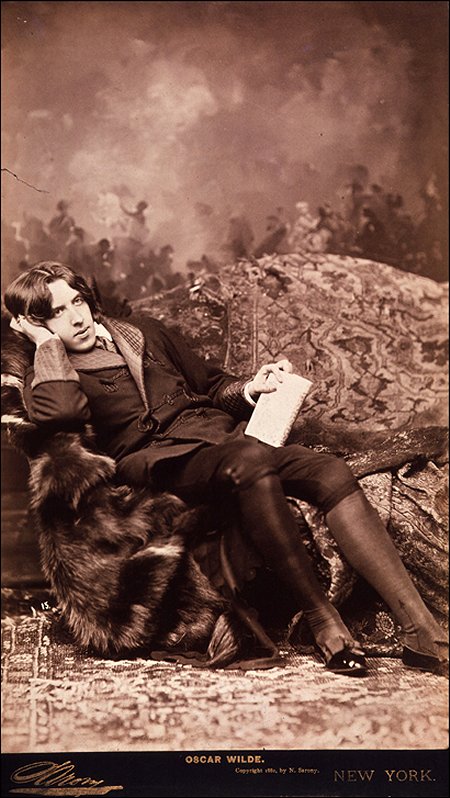
‘Oscar Wilde’ – Napoleon Sarony – New York 1882 – Albumen panel print – National Portrait Gallery, London – Sarony’s photographs, taken at the beginning of Oscar Wilde’s American lecture tour, fixed his image in the public imagination as the epitome of the Aesthete
Late-flowering beauty
1880s-1890s
Oscar Wilde, the first celebrity style-guru, invented a brilliant pose of ‘poetic intensity’, but initially made his name promoting the idea of ‘The House Beautiful’. By the 1880s Britain was in the grip of the ‘greenery-yallery’ Aesthetic Craze, lovingly satirised by Gilbert and Sullivan in their famous comic opera Patience and by the caricaturist George Du Maurier in the pages of Punch.
In the last decade of Queen Victoria’s reign the Aesthetic Movement entered its final, fascinating Decadent phase, characterised by the extraordinary black-and-white drawings of Aubrey Beardsley in The Yellow Book.
The exhibition ends with a superb group of the greatest late Aesthetic paintings, including masterpieces such as Leighton’s Bath of Psyche, Moore’s Midsummer and Rossetti’s final picture The Daydream, shown alongside the sensuous nude figures sculpted in bronze and precious materials by Alfred Gilbert and other brilliant younger exponents of ‘The New Sculpture’.
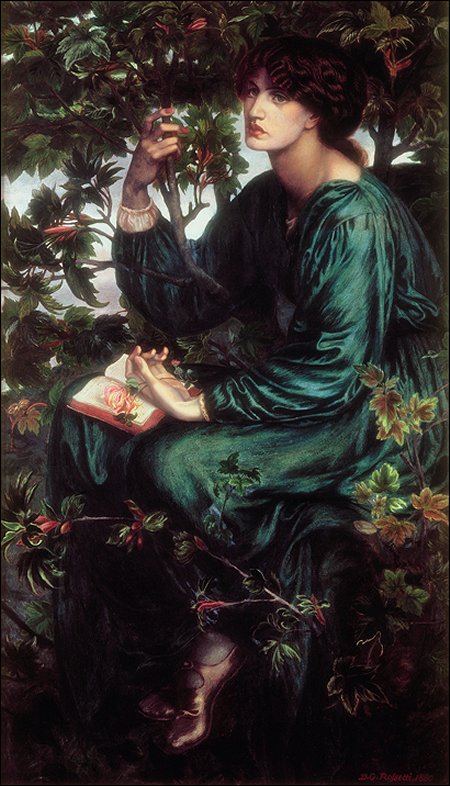
‘The Day Dream’ – Dante Gabriel Rossetti – 1880 London – Oil on canvas – Museum no. CAI.3 – Bequeathed by Constantine Alexander Ionides – This is one of the last major oil paintings that Rossetti completed. The lush green leaves match the fullness of Jane Morris’s figure in her green silk dress
Victoria & Albert Museum London
until 17 July 2011 last chance to see
THE CULT OF BEAUTY: THE AESTHETIC MOVEMENT 1860-1900
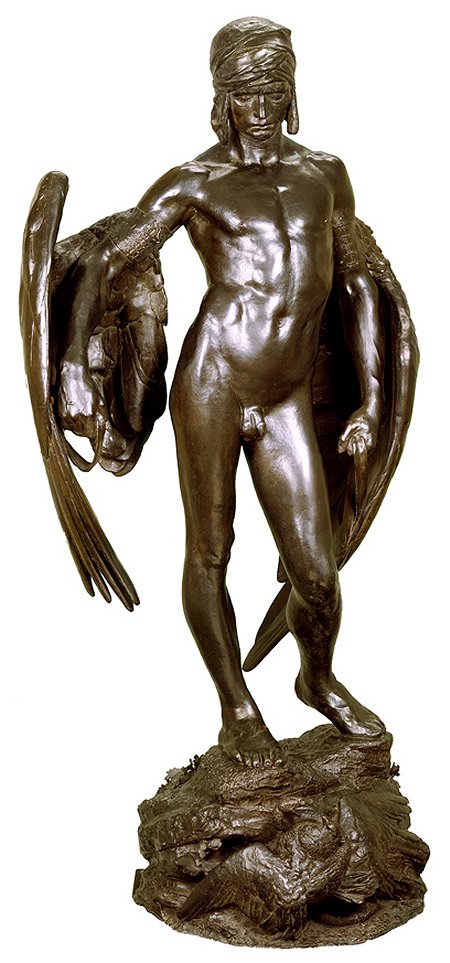
‘Icarus’ – Alfred Gilbert – Rome and Naples – Cast in the foundry of Sabatino de Angelis 1884 – Bronze – Amgueddfa Cymru – National Museum Wales – © National Museum of Wales – Frederic Leighton commissioned Gilbert to produce a bronze statue, leaving him to choose the subject. Gilbert took the mythical figure of Icarus, the ambitious youth who flew too close to the sun
fleursdumal.nl magazine
More in: *The Pre-Raphaelites Archive
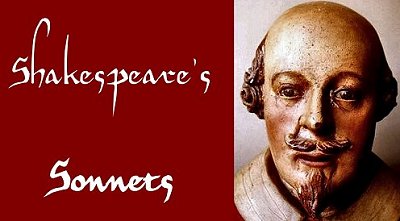
William Shakespeare
(1564-1616)
THE SONNETS
86
Was it the proud full sail of his great verse,
Bound for the prize of (all too precious) you,
That did my ripe thoughts in my brain inhearse,
Making their tomb the womb wherein they grew?
Was it his spirit, by spirits taught to write,
Above a mortal pitch, that struck me dead?
No, neither he, nor his compeers by night
Giving him aid, my verse astonished.
He nor that affable familiar ghost
Which nightly gulls him with intelligence,
As victors of my silence cannot boast,
I was not sick of any fear from thence.
But when your countenance filled up his line,
Then lacked I matter, that enfeebled mine.
![]()
kempis.nl poetry magazine
More in: -Shakespeare Sonnets
![]()
De dichteres Ellen Warmond (pseudoniem van Pietronella Cornelia van Yperen) is, na een lang ziekbed, op 28 juni 2011 overleden. Naast haar dichtwerk (debuut: Proeftuin 1953), schreef ze veel secundaire literatuur, zoals biografieën van o.a. Louis Couperus, Herman Gorter, Adriaan Roland Holst, E. du Perron en Anna Blaman.
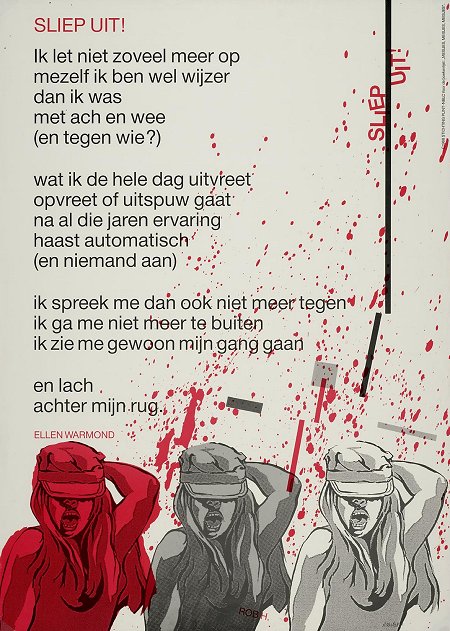
Ellen Warmond
(1930-2011)
Jong als kinderstemmen
Jong als kinderstemmen
reeds met de tongval van de ouderdom
te kunnen zeggen:
zie achter mij hoeveel ik al tot stof geleefd heb
en hoeveel as zich ophoopt in mijn ogen
en hoeveel stof en as mijn hand daarvan
bevatten kan en samenbalt tot niets.
en toch en desondanks
wachten – onmatig –
– want matigheid is zwakte –
en nieuwe kleren kopen voor de hoop
hoewel de laatste zekerheden naakt gaan
en trachten waar men niet bestond
toch te ontstaan
om het onmogelijk natuurverschijnsel:
zon in de maan
rondlopende weg terug
of het oog in de rug.
omdat geloof ontspringt
uit de zekerheid dat er geen hoop meer is
omdat het hart zich voedt
met wat de hand ontvalt.
Ellen Warmond (1930-2011) gedichten
fleursdumal.nl magazine
More in: Archive W-X, In Memoriam
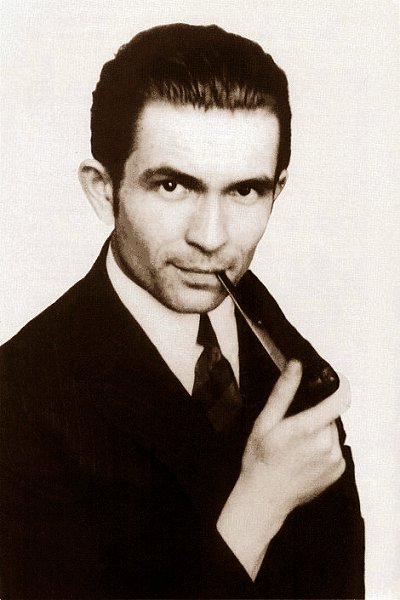
Paul van Ostaijen
(1896-1928)
HULDEGEDICHT AAN SINGER
Slinger
Singer
naaimasjien
Hoort
Hoort
Floris jespers heeft een Singernaaimasjien gekocht
Wat
Wat
jawel
Jespers Singer naaimasjien
hoe zo
jawel
ik zeg het u
Floris jespers heeft een Singernaaimasjien gekocht
Waarom
waardoor
wat wil hij
Jawel
hij zal
hoe zo
Circulez
want
SINGERS NAAIMASJIEN IS DE BESTE
de beste
waarom
hoe kan dat
wie weet
alles is schijn
Singer en Sint Augustinus
Genoveva van Brabant
bezit ook een Singer
die jungfrau von Orleans
Een Singer?
jawel
jawel jawel jawel ik zeg het u een Singer
versta-je geen nederlands mijnheer
Circulez
Bitte auf Garderobe selbst zu achten
lk wil een naaimasjien
iedereen heeft recht op een naalmasjien
ik wil een Singer
iedereen een Singer
Singer
zanger
meesterzangers
Hans Sachs
heeft Hans Sachs geen Singermasjien
waarom heeft Hans Sachs geen Singer
Hans Sachs heeft recht op een Singer
Hans Sachs moet een Singer hebben
Jawel
dat is zijn recht
Recht door zee
Leve Hans Sachs
Hans Sachs heeft gelijk
hij heeft recht op
SINGERS NAAIMASJIEN IS DE BESTE
alle mensen zijn gelijk voor Singer
Circulez
een Singer
Panem et Singerem
Panem et Singerem P a n e m et S i n g e r e m PANEM ET SINGEREM
e t S i n g e r e m e t S i n g e r e m
Ik wil een Singer
wij willen een Singer
wij eisen een Singer
wat wij willen is ons recht
ein fester Burg ist unser Gott
Panem et Singerem P a n e m et S i n g e r e m PANEM ET SINGEREM
e t S i n g e r e m e t S i n g e r e m
Waarom
hoe zo
wat wil hij
wat zal hij
Salvation army
Bananas atque Panama
de man heeft gelijk
hij heeft gelijk
gelijk heeft hij jawel
jawel
jawel
waarom
wie zegt dat
waar is het bewijs
jawel hij heeft gelijk
Panem et Singerem P a n e m et S i n g e r e m PANEM ET SINGEREM
e t S i n g e r e m e t S i n g e r e m
SINGERS NAAIMASJIEN IS DE BESTE
Paul van Ostaijen poetry
kempis.nl poetry magazine
More in: *Concrete + Visual Poetry K-O, Archive O-P, Ostaijen, Paul van, Paul van Ostaijen, Paul van Ostaijen
Thank you for reading Fleurs du Mal - magazine for art & literature